Do I need flood insurance?
Flood-proof your finances and get peace of mind. Buy flood insurance.
Anyone can be financially vulnerable to floods. Homeowners and renters outside of designated floodplains are at risk and most are not properly insured for floods. In fact, people living outside of mapped high-risk flood areas file nearly 25% of all National Flood Insurance Program claims and receive one-third of Federal Disaster Assistance for flooding.
- Since October 2016, 20 of 72 counties in Wisconsin have received federal disaster declarations due to flooding.
- In the federally-declared 2008 flooding disaster in Wisconsin, the flood impacted 31 southern counties and 24,000 residents received assistance from FEMA.
- Average household FEMA disaster relief awards related to the flooding was less than $4,000. Those with flood insurance could receive the total cost of their damages.
- A one-percent chance flood (or 100-year event) can happen four or more times during a 30-year mortgage.
- In Wisconsin, annual average precipitation rose by about 3.1 inches between 1950 and 2006 representing a 10 percent increase.
- Over the next 50 years, the observed trend toward an increase in the annual amount of precipitation is expected to continue (Wisconsin Emergency Management 2016 Hazard Mitigation Plan)
Flood insurance facts
- Why do I need flood insurance?
-
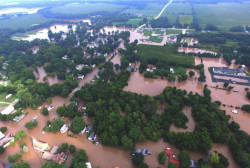
Summer 2018, Mazomanie, Dane County WI
- Flood insurance is important, even in low-risk areas that are not mapped in the floodplain. In Wisconsin, flooding is not only caused by rising levels in lakes and streams, it is also caused by broken water mains, blocked drainage systems, rapid snow melt (particularly when the ground is still frozen), periods of heavy rain in a short amount of time and ice jams. Floods are exacerbated by high groundwater levels.
- Most homeowner's insurance does not cover flood damage. Flood loss to a home or business can easily total $25,000 or more. Having a flood insurance policy for a business or home is an important tool for recovery.
- Most renter's insurance does not cover losses of contents due to flood damage.
- Federal Disaster Assistance is not a guarantee. According to the Federal Emergency Management Agency (FEMA), the president must declare a major disaster before most forms of federal disaster assistance can be offered and most forms of disaster assistance are loans that must be repaid with interest.
- Flood insurance will cover the home and belongings regardless of whether there is a Presidential Disaster Declaration.
- Flood insurance will reimburse for all flood losses.
- Flood insurance facts
-

2017 Kenosha County-Illinois-Fox River Flood.
Flood insurance through the National Flood Insurance Program (NFIP) covers contents in the home.
- Most homeowner's and renter's policies do not cover losses due to floods.
- Flood insurance claims are paid even if a disaster is not declared by the president.
- Flood insurance covers:
- walled and roofed structures principally above ground;
- a building in the course of construction;
- a detached garage used for limited storage or parking;
- Foundation walls, anchorage systems and staircases attached to the building;
- refrigerators, cooking stoves and built-in appliances such as dishwashers;
- permanently installed carpeting over an unfinished floor;
- the electrical and plumbing systems; and
- furnaces, water heaters, heat pumps and sump pumps.
- The contents portion of a flood insurance policy covers:
- personal belongings such as clothing, furniture and electronic equipment;
- curtains;
- portable and window air conditioners (easily moved or relocated);
- portable microwave ovens and portable dishwashers;
- carpets not included in building coverage (carpet installed over wood floors, etc.);
- laundry washers and dryers; and
- certain valuable items such as original artwork and furs (up to $2,500).
The time to buy flood insurance is before the flood.
- There is a 30-day waiting period for an NFIP policy to take effect. The time to buy flood insurance is before becoming aware of an anticipated flood.
- If purchasing an NFIP flood policy at the time of purchasing a new home, the policy is effective immediately.
- Purchasing flood insurance
-

2017 Fox River. Burlington, WI, Racine County
To purchase insurance through the National Flood Insurance Program (NFIP), homeowners should contact their local insurance agent. If unable to find a local agent, call 1-800-427-4661 (FEMAs National Flood Insurance Program) for assistance.
- The cost of flood insurance
-
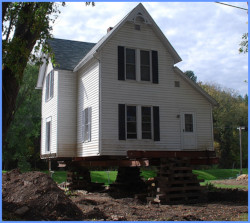
Soldiers Grove, Crawford County WI
Elevating houses can lower flood insurance rates.
- Mitigation is the effort to reduce loss of life and property by lessening the impact of a flood. Flood mitigation reduces the overall risk of a structure experiencing flood damage, and also reduces the severity of flood damage when it occurs. A mitigated structure will have lower flood insurance costs.
- For information on flood mitigation options for your structure, contact your local zoning administrator or email dnrfloodplain@wisconsin.gov
- Preferred Risk Policy for Homeowners and Renters. The National Flood Insurance Program's (NFIP) Preferred Risk Policy (PRP) offers lower-cost protection for homes and apartments in areas of low to moderate flood risk. These areas outside of known floodplains are shown as B, C, or X, zones on a Flood Insurance Rate Map.
- Enter your address at the FEMA's Map Service Center to determine the flood zone for your structure.
- Encourage your community to join the FEMA Community Rating System. Community participation lowers NFIP rates for everyone in the community.
- Mitigation is the effort to reduce loss of life and property by lessening the impact of a flood. Flood mitigation reduces the overall risk of a structure experiencing flood damage, and also reduces the severity of flood damage when it occurs. A mitigated structure will have lower flood insurance costs.
- Crops, livestock and flood insurance
-
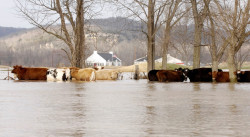
Insurance can be purchased through the NFIP to cover agricultural structures, but not crops or livestock.
- Flood insurance resources
-

- EMA Flood Insurance Fact Sheet
- How do I buy flood insurance?
- In 2018, the NFIP celebrated 50 years of protecting people in the United States against the perils of flood damage.
- Preferred Risk Policy premiums are the lowest premiums available through the NFIP, offering building and contents coverage for one low price.
Wisconsin citizens and professionals
The DNR has additional information on other topics of interest.
- How to make your community more flood resilient
- Selling and purchasing flood insurance
- Selling and buying a home
- Local officials
-
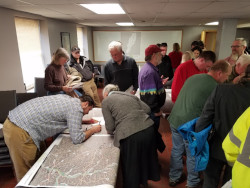
- Know your risk from flooding.
- Know your role in the Risk MAP process.
- Take action to reduce your community’s risk from flooding.
Make your community more flood resilient:
- Join the National Flood Insurance Program (NFIP) in Wisconsin or contact Brian Cunningham.
- Participate in the FEMA Community Rating System (CRS) Program. The National Flood Insurance Program's CRS is a voluntary incentive program that recognizes and encourages community floodplain management activities that exceed the minimum NFIP requirements. As a result, flood insurance premium rates are discounted to reflect the reduced flood risk resulting from the community actions meeting the three goals of the CRS.
- Reduce flood damage to insurable property.
- Strengthen and support the insurance aspects of the NFIP.
- Encourage a comprehensive approach to floodplain management.
- Insurance agents
-
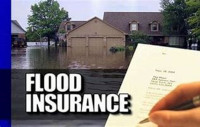
- Join the NFIP as we strive to ensure more Americans protect the life they’ve built.
- NFIP training requirements (State of Wisconsin Office of the Commissioner of Insurance)
- Realtors
-
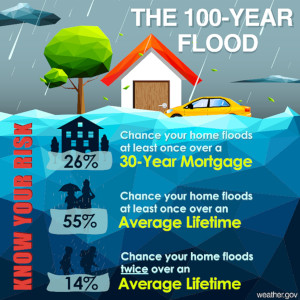
Properties located outside of the mapped floodplain are eligible for flood insurance. There are steps you can take to assist your clients in protecting their real estate investment.
- Determine the flood risk of the property by finding the flood zone for the property's address at the FEMA's Map Service Center. If the structure is in the mapped floodplain, there is a high flood risk. Buy flood insurance today!
- The National Flood Insurance Program's (NFIP) Preferred Risk Policy (PRP) offers lower-cost protection for homes and apartments in areas of low to moderate flood risk. These areas outside of known floodplains are shown as B, C, or X, zones on a Flood Insurance Rate Map.
- A local insurance agent can write NFIP Flood Protection Policies. If you are not able to find an agent in your area, call 1-800-427-4661 (FEMAs National Flood Insurance Program) for assistance in finding an agent.
- If the community is a National Flood Insurance Program (NFIP) participant, you are eligible for federal flood insurance.
- Find out if your community is an NFIP participant.
- If your community is not an NFIP participant:
- Speak with your local zoning administrator about having your community join the NFIP.
FEMA has additional resources.
- Determine the flood risk of the property by finding the flood zone for the property's address at the FEMA's Map Service Center. If the structure is in the mapped floodplain, there is a high flood risk. Buy flood insurance today!
